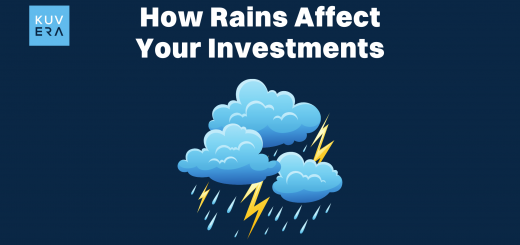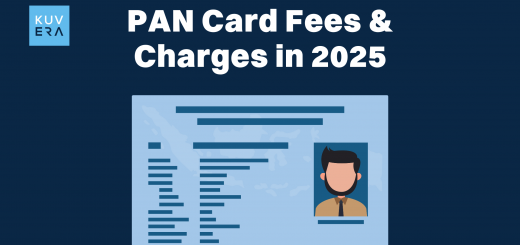Index funds have become a popular choice among investors seeking broad market exposure with low costs. Among the most significant indices in India, the Nifty 50 and Nifty Next 50 offer different risk-return profiles. Let us explore some aspects of the Nifty 50 and Nifty Next 50 Index Funds in the following manner:
Understanding Nifty 50 and Nifty 50 Index Funds

Nifty 50 Index funds are mutual funds that passively invest in stocks constituting the Nifty 50 Index. The Nifty 50 Index is India’s premier stock market index, comprising the 50 largest and most liquid companies listed on the National Stock Exchange (NSE). The index serves as a benchmark for large-cap stocks and represents approximately 54% of the total market capitalisation of the NSE.
The fund manager tries to replicate the index’s performance by holding stocks in the same proportion as in the Nifty 50. These funds are classified as Large-Cap Index Funds, as per SEBI’s mutual fund categorisation.
Features of Nifty 50 Index Funds
1. Market Leadership
The sectoral distribution of Nifty 50 has major share of Financial Services (36.53%), Information Technology (13.15%), Oil, Gas and Consumable Fuels (10.40%), among various others. The index includes various industry leaders which are known for their stability and strong financial performance.

Source: Source: NSE Indices, Factsheet.
2. Lower Volatility
Since the Nifty 50 comprises established blue-chip companies, it is less volatile compared to mid-cap and small-cap indices.
3. Steady Growth
Historically, Nifty 50 has provided consistent, inflation-beating returns, making it suitable for long-term wealth creation.
4. Defensive in Downturns
During market corrections, large-cap stocks tend to decline less compared to mid- and small-cap stocks, providing a cushion against severe losses.
5. High Liquidity
The stocks in this index have high trading volumes, making index funds based on Nifty 50 highly liquid.
Understanding Nifty Next 50 and Nifty Next 50 Index Funds
The Nifty Next 50 Index Funds track Nifty Next 50 Index which represents the next 50 largest companies by market capitalisation after those included in the Nifty 50. As per NSE Indices, Nifty Next 50 is computed using Free Float Market Capitalisation weighted method, wherein the level of index reflects the free float market capitalisation of all stocks in Index.
This index is often considered a gateway to future large-cap stocks, as many of its constituents eventually graduate to the Nifty 50.
Features of Nifty Next 50 Index Funds
1. Growth Potential
Stocks in this index are on their way to becoming large-cap leaders, offering higher growth potential compared to Nifty 50.
2. Higher Volatility
Since these companies are still growing, their stock prices tend to be more volatile than those in the Nifty 50.
3. Sectoral Diversification
The index provides exposure to emerging leaders across various sectors, where in financial services accounts for 23.76% distribution followed by the consumer services with 12.92% distribution and Power sector being third major component with the distribution of 9.78%. Various other sectors such as the fast moving consumer durables, capital goods, healthcare, oil gas and consumable fuels etc. also contribution distinctively to the sectoral diversification. The top companies in the NIFTY Next 50 list are as follows:

Source: NSE Indices, Factsheet.
4. Higher Returns Over Time
Historically, the Nifty Next 50 has outperformed the Nifty 50 over longer periods. The diversified profile of this category has potential of higher return with increased volatility.
5. Potential for Upgradation
Many Nifty Next 50 stocks eventually enter the Nifty 50, allowing investors to benefit from companies transitioning into blue-chip status. Over the last two decades approximately more than 40 stocks from the Nifty Next 50 have been promoted to the Nifty 50.
Understanding the Performance of Nifty 50 and Nifty Next 50 Index Funds
| Sr. No. | Nifty 50 Index Fund Schemes | Return | Expense Ratio | |
| 1 Year | 3 Year | TER | ||
| 1 | IDBI Nifty 50 Index Growth Direct Plan | 16.84% | 21.06% | 0.32% |
| 2 | Navi Nifty 50 Index Growth Direct Plan | 7.14% | 11.99% | 0.06% |
| 3 | DSP Nifty 50 Index Growth Direct Plan | 7.13% | 11.96% | 0.18% |
| 4 | Axis Nifty 50 Index Growth Direct Plan | 7.13% | 12.02% | 0.12% |
| 5 | UTI Nifty 50 Index Growth Direct Plan | 7.13% | 11.97% | 0.17% |
| Sr. No. | Nifty 50 Index Fund Schemes | Return | Expense Ratio | |
| 1 Year | 3 Year | TER | ||
| 1 | Kotak Nifty Next 50 Index Growth Direct Plan | 7.16% | 16.41% | 0.11% |
| 2 | Edelweiss Nifty Next 50 Index Growth Direct Plan | 7.12% | NA | 0.09% |
| 3 | UTI Nifty Next 50 Index Growth Direct Plan | 7.12% | 16.21% | 0.35% |
| 4 | SBI Nifty Next 50 Index Growth Direct Plan | 7.07% | 16.19% | 0.35% |
| 5 | Axis Nifty Next 50 Index Growth Direct Plan | 7% | 16.18% | 0.15% |
Source: Kuvera, March 23, 2025.
1. Performance Divergence
Nifty Next 50 Index Funds show superior long-term returns, making them more attractive for investors with a higher risk appetite. However, their short-term performance remains moderate. For instance, IDBI Nifty 50 Index Fund has significantly outperformed other Nifty 50 funds in both 1-year (16.84%) and 3-year (21.06%) returns.
2. Expense Ratio Variation
Nifty Next 50 Index Funds generally have higher expense ratios due to increased volatility, with UTI and SBI charging 0.35%. Navi Nifty 50 Index Fund has the lowest expense ratio at 0.06%, making it the most cost-effective option.
3. Risk-Return Trade-Off
Nifty 50 Index Funds offer stability and lower risk, making them suitable for conservative investors. However, Nifty Next 50 Index Funds provide higher returns but greater risk, making them more suitable for aggressive investors looking for long-term capital appreciation. For instance, UTI and Axis Nifty Next 50 Index Funds have shown consistent long-term performance.
Experts’ Views on Nifty 50 and Nifty Next 50
Dev Ashish, a SEBI Registered Investment Advisor and Founder of StableInvestor, suggests that combining Nifty 50 and Nifty Next 50 can effectively cover large-cap allocations. He advocates for a blend of passive investments in these indices alongside active funds targeting mid- and small-cap segments to achieve a well-diversified, risk-optimized portfolio. (Moneycontrol)
Which Index Fund is Suitable for You?
Selecting the right index fund depends on your risk appetite, investment horizon, and financial goals. Nifty 50 Index Funds are ideal for stability and steady compounding, making them suitable for retirees and risk-averse investors. Nifty Next 50 Index Funds offer higher growth potential but with greater risk, making them more appropriate for long-term, aggressive investors. A 70:30 combination of Nifty 50 and Nifty Next 50 can help balance risk and reward effectively.
Wrapping Up
Both Nifty 50 and Nifty Next 50 Index Funds offer distinct advantages based on an investor’s financial objectives. Nifty 50 is a reliable, lower-risk investment for stable long-term growth, whereas Nifty Next 50 provides greater return potential at the cost of increased volatility. Experts view a balanced portfolio incorporating both indices can provide optimal growth and risk management.
Understanding these differences and aligning them with investment goals is crucial for financial planning. As an investor, you should consult with a financial advisor to tailor your investment strategy based on your risk tolerance and financial aspirations.
Interested in how we think about the markets?
Read more: Zen And The Art Of Investing
Watch here: Is UPI Killing the Toffee Business?












